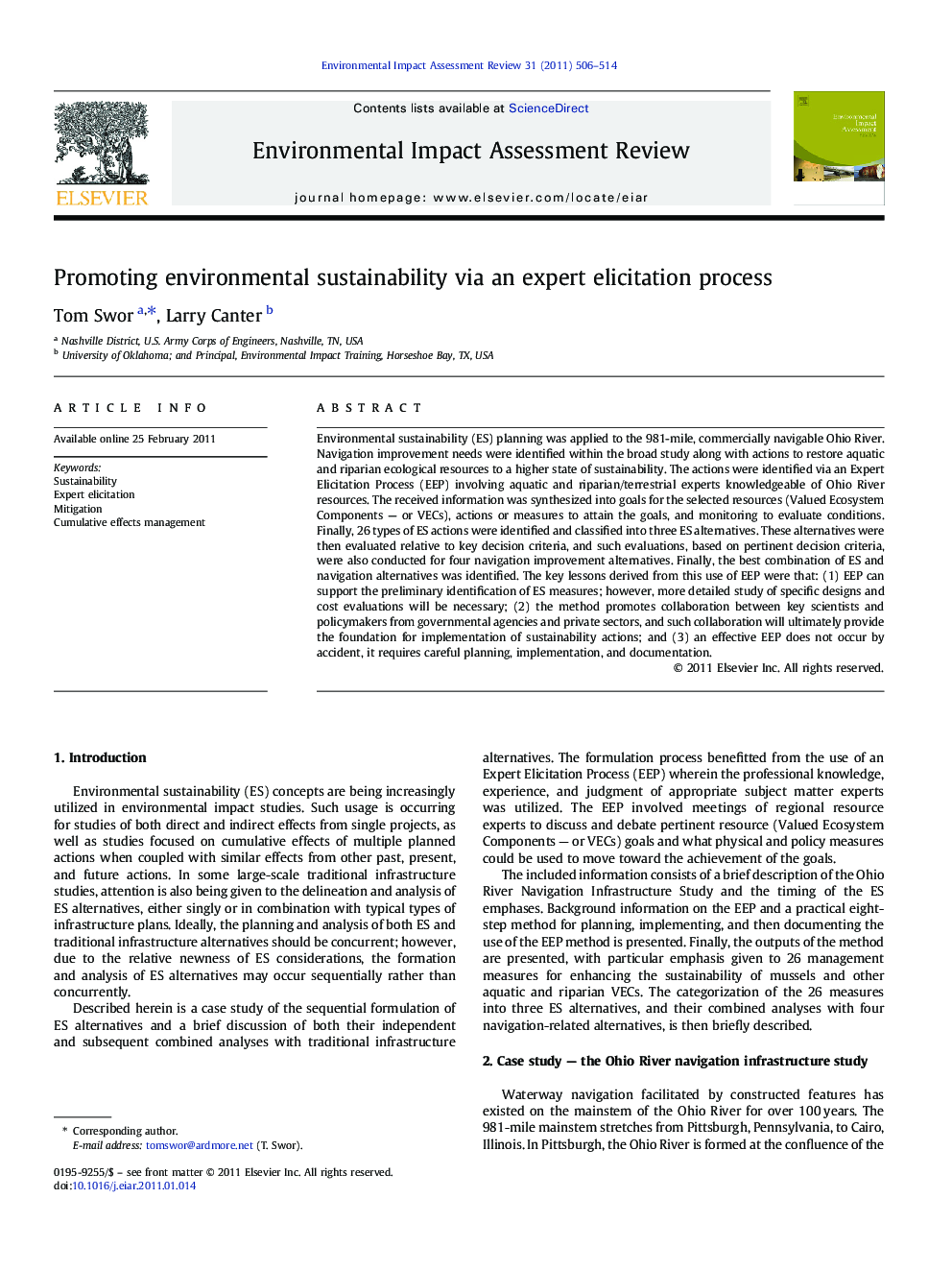| Article ID | Journal | Published Year | Pages | File Type |
|---|---|---|---|---|
| 1052928 | Environmental Impact Assessment Review | 2011 | 9 Pages |
Environmental sustainability (ES) planning was applied to the 981-mile, commercially navigable Ohio River. Navigation improvement needs were identified within the broad study along with actions to restore aquatic and riparian ecological resources to a higher state of sustainability. The actions were identified via an Expert Elicitation Process (EEP) involving aquatic and riparian/terrestrial experts knowledgeable of Ohio River resources. The received information was synthesized into goals for the selected resources (Valued Ecosystem Components — or VECs), actions or measures to attain the goals, and monitoring to evaluate conditions. Finally, 26 types of ES actions were identified and classified into three ES alternatives. These alternatives were then evaluated relative to key decision criteria, and such evaluations, based on pertinent decision criteria, were also conducted for four navigation improvement alternatives. Finally, the best combination of ES and navigation alternatives was identified. The key lessons derived from this use of EEP were that: (1) EEP can support the preliminary identification of ES measures; however, more detailed study of specific designs and cost evaluations will be necessary; (2) the method promotes collaboration between key scientists and policymakers from governmental agencies and private sectors, and such collaboration will ultimately provide the foundation for implementation of sustainability actions; and (3) an effective EEP does not occur by accident, it requires careful planning, implementation, and documentation.
Research Highlights► Use of an Expert Elicitation Process (EEP) is demonstrated in this study. ► EEP was used to identify Environmental Sustainability (ES) needs for the Ohio River. ► EEP helped develop consensus among resource experts on ES needs. ► EEP promotes collaboration to identify and contribute to common resource goals. ► EEP may be used in assessing cumulative effects and formulating restoration plans.
